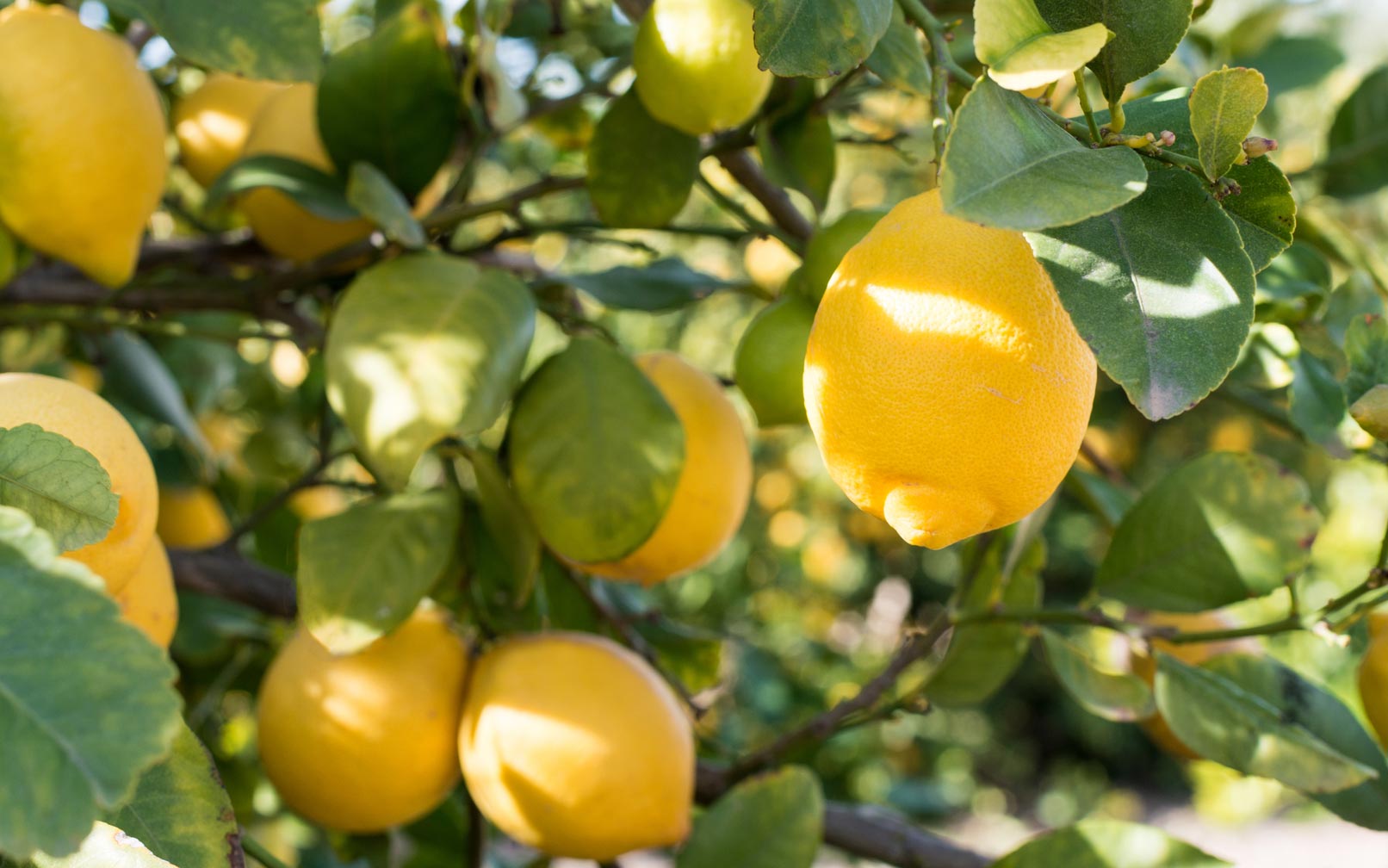Humidity levels, water, and sunshine are three key components to growing thriving lemon trees in large planters. Not only are lemon trees beautiful, but they provide delicious citrus fruit. Lemon trees generally take about 3-5 years before they start to showcase fruit. Yet, under the wrong conditions, lemon trees are not going to survive or produce any fruit.
Here are some top tips for growing healthy lemon trees in large planters.
#1. Pick the Right Lemon Tree for Planters
Lemon trees grown in planters are not going to grow as large as lemon trees grown in the ground. For the best results, seek out dwarf variations that thrive in containers, such as Meyer Improved Dwarf, Libson, or Ponderosa Dwarf.
It is equally important to pick the right planter, one that is large enough for the lemon tree and its roots to grow.
#2. Fertilizers are Important for Citrus Trees
If you notice yellow spots on a lemon tree, it’s calling out for chlorophyll. Yellow spots are a key indicator of stress and that your plant is not getting the nutrients it requires to thrive. Citrus trees require a well-balanced 18-18-18 fertilizer, which can be used all year long. A slow release fertilizer will help ensure the tree receives consistent bursts of much-needed nutrients.
#3. The Right Humidity for Lemon Trees
Most citrus trees require close to 50% humidity to survive and thrive. Most outdoor climates provide this, but that’s why lemon trees are never going to grow properly indoors. Sure, you can easily increase indoor humidity, but you wouldn’t want to. With increased humidity comes a whole host of unwanted things, like peeling paint, mold, and mildew.
If you do keep your potted lemon tree inside, make sure to move it outside on warm days, when indoor air becomes particularly stale and unfit for citrus trees. Just be careful that you don’t overexpose it to the sun. If your tree usually lives indoors, it’ll have very fair “skin” in the sun, so don’t overdo it.
#4. Give Lemon Trees Enough Water, But Not Too Much Water
If you notice the leaves on your lemon tree curling in or under, it’s a sign that it is not getting enough moisture and it’s trying to conserve the little moisture it has. This also indicates a dry root, which will cause a great deal of stress on any plant. Another sign that a lemon tree requires more water is if the leaves all start to fall off.
If the soil becomes overly dry, salts are released and can damage the plant. When the soil remains moist, salts remain soluble and do not damage plants.
You don’t want to overwater your lemon tree trying to prevent dry soil or roots. Too much water can be just as detrimental. If plants become waterlogged, aka water is sitting at the bottom of the planter soaking the roots, it is a recipe for root rot.
#5. Good Planter Drainage is a Must
Potted lemon trees require drainage, just like trees growing in the ground. Make sure the pot you select has good drainage holes. Or, better yet, stick with self-watering planters.
A self-watering planter can prevent the detrimental effects of overwatering, while also compensating in case the plant is under-watered. That’s because excess water is channeled into a chamber that is separate from the planter. Tree roots can reach down into the chamber and access water as needed, but roots are not at risk of soaking in water for prolonged periods of time.
#6. Trees Need Air Movement
Stale or stagnant air is not going to make a lemon tree very happy. Natural air movement is important for citrus trees to thrive. Luckily, this is a natural perk to keeping your trees outside. The natural wind provides enough air movement to keep lemon trees healthy and happy.
#7. Lemon Trees Need Lots of Sunlight
Lemons have the same bright coloring as the sun, so it’s only natural that they require plenty of sunshine to thrive. Lemon trees require at least 8-hours of sunshine every single day. They do best when they get as much as 12-hours of sunshine per day. Lemon trees placed in areas that receive limited or filtered light are going to struggle. Really strong sunlight is crucial for lemon trees to thrive. After all, just think of all the energy citrus trees require to bloom and produce fruit.
#8. Remove Sucker Branches ASAP
A common issue that can strike potted trees is the development of a sucker branch. Sucker branches grow from the root stock of the tree. If the tree is under stress, the root stock may try to take over the tree. The moment you notice a sucker branch growing from the bottom of your lemon tree, have it pruned right away.
Can You Grow Lemon Trees Indoors?
Potted lemon trees can live in indoor climates, but they need plenty of time outdoors to reach their full potential. If you’ve ever seen someone with a lemon tree indoors, and it looks good, chances are they grew it outside and then brought it inside when it was show-worthy. While it looks really cool to have a lemon tree inside of your home or office, that tree cannot thrive without spending adequate time outdoors.
Long Lasting Planters for Lemon Trees
TerraCast Products is proud to produce the leading planters in the industry. Our sustainable manufacturing process produces the highest quality planters, capable of withstanding all types of weather, wear and tear, and even impact damage. If you are planning to grow lemon trees in a planter, trust nothing less than the best.
Shop our wide variety of residential and commercial planters: https://www.terracastproducts.com/our-shop/planters/

